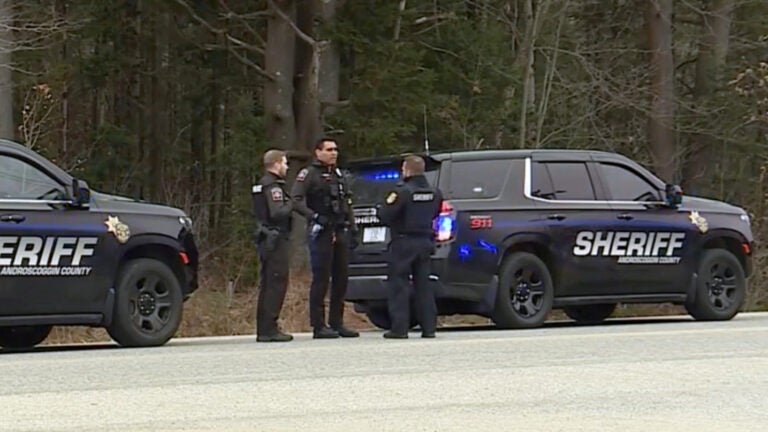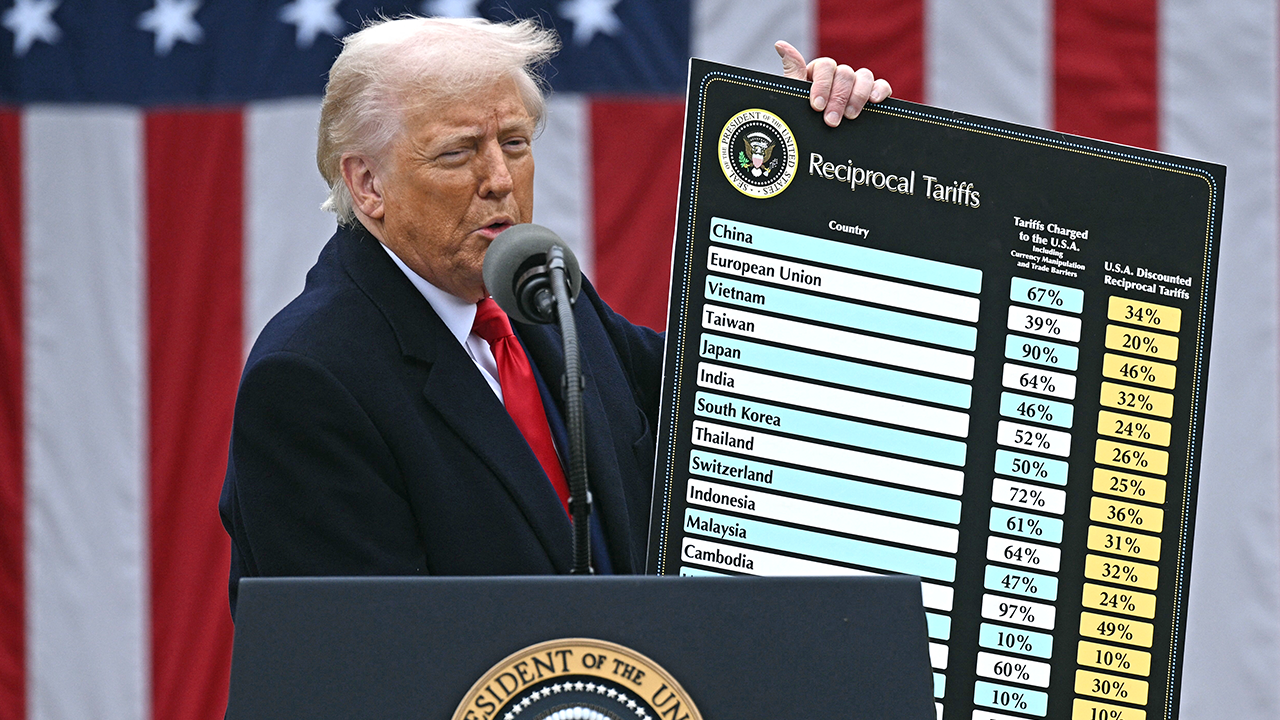Pennsylvania
Pennsylvania legislators must pass a “red-flag” law to keep guns out of the hands of dangerous people | Opinion

By Lt. Gov. Austin Davis
Earlier this year, I had the honor of becoming Pennsylvania’s first Black lieutenant governor and the youngest lieutenant governor in the country.
Next month, I will become something even more important – a father.
But I’m worried about bringing a daughter into the world when firearms are now the number one cause of death for young people in America. According to a survey conducted in March, half of young Americans reported they felt unsafe in the previous month, and four in 10 were worried about becoming a victim of gun violence or a mass shooting.
Of course, the threat of gun violence is not a new problem; it’s the issue that first brought me to public service. I was 15 years old, living in a working-class community near Pittsburgh with my mom and my sister, and gun violence came to our doorstep. Not 50 feet from our house, a man was shot. I decided to go to a city council meeting and find out what our representatives intended to do about it. I started a youth violence prevention program at my high school, and after graduating from college, I helped to start Allegheny County’s first violence prevention office.
Today this work is more important than ever. Last year there were more than 300 shootings on school property. In recent months we’ve experienced a wave of horrifying mass shootings. This year in our state, police officers have been shot and killed in Brackenridge, Philadelphia and my hometown of McKeesport, and in June we lost a State Police trooper in a shooting in rural central Pennsylvania.
Despite what you may hear, the epidemic of gun violence is not a “Philadelphia” or “Harrisburg” problem. It’s a uniquely American problem. But it’s a problem we can do something about.
In fact, there are glimmers of hope right now as elected officials, law enforcement and community members work together to address this violence. Homicides are declining in many major U.S. cities, including in Philadelphia and Pittsburgh. This is cold comfort for those who have lost loved ones and the residents who have been traumatized, but it is evidence that efforts on the ground by law enforcement officers and community-led organizations are making an impact.
Public safety is one of the top priorities of the Shapiro-Davis Administration – and Pennsylvanians deserve to feel safe and be safe in their communities. Last month I launched a statewide “Safer Communities” tour as chair of the Pennsylvania Commission on Crime and Delinquency to learn more about the groups and individuals who are addressing gun violence in their communities.
In Pittsburgh, I met with Father Paul Abernathy, an Orthodox priest and Iraq War veteran who is leading the Neighborhood Resilience Project, which deploys a mobile trauma response unit across Allegheny County whenever there is a shooting.
I heard from Tiff Lowe, who once led a life of crime and now heads up York city’s Group Violence Intervention project.
In Allentown, I talked with Jeani Garcia, a mother whose son was murdered and who now works to stop the cycle of violence through the Promise Neighborhoods organization.
Hearing how these Pennsylvanians are turning their pain into purpose was truly inspiring. We need a comprehensive response to make sure their efforts aren’t in vain.
We must support common-sense gun safety proposals that have broad support amongst Americans of every political persuasion.
The Pennsylvania House recently took bold, bipartisan action on legislation that would require background checks on every sale of a firearm and provide a mechanism for loved ones, family members or law enforcement to ask a judge to hold a hearing to temporarily disarm someone in crisis, also known as an extreme risk protection order or “red flag” law.
I encourage my colleagues in the Pennsylvania Senate to take up these bills as soon as possible.
We must continue to invest in community-based organizations like the Neighborhood Resilience Project and Promise Neighborhoods of the Lehigh Valley. The Shapiro-Davis budget makes record state funding investments in grants and technical assistance to address community violence throughout the Commonwealth, including $40 million through the Violence Intervention and Prevention program, which has supported these organizations in their vital work.
Finally, we must address the root causes of violence, like poverty and unemployment. It’s critical that we create ladders of opportunity, through high-quality public schools, workforce development, apprenticeships and career and technical education, so every kid has the freedom to chart their own course and achieve their dreams.
That’s what I want for my daughter – a safe community and the opportunity for her to become whoever she wants to be.
Austin Davis is Lt. Governor of the Commonwealth of Pennsylvania.

Pennsylvania
Pennsylvania FedEx employees accused of stealing phones from shipments to resell

FedEx package is seen on a street in Florence, Italy on March 12th, 2025 (Photo by Beata Zawrzel/NurPhoto via Getty Images)
HARRISBURG – Two Delaware County FedEx employees are accused of stealing cellphones from shipments and passing them off to sellers who netted over $50k.
Lahneir McBride and Cahron Wilmore, both 25, were charged with felony counts of corrupt organizations, organized retail theft, and more.
Seven others who allegedly sold the stolen phones on several different occasions were arrested and charged with similar crimes.
What we know:
Pennsylvania Attorney General Dave Sunday announced that two Delaware County FedEx workers were charged for stealing cellphones to resell for profit.
Investigators say Lahneir McBride and Cahron Wilmore, both 25, were both hired by FedEx last summer and ran the “theft ring” from June to September.
It’s alleged that they stole over 180 phones worth more than $173,000, and passed them off to at least seven “sellers” who offloaded the phones for $200-$300 each.
Investigators say the stolen phones were sold using EcoATM stations, which are essentially vending machines where people can buy and sell devices.
The machines record all sales with documentation and photographs, which lead police to the Linwood FedEx warehouse where McBride and Wilmore worked.
Both men were charged with felony counts of corrupt organizations, organized retail theft, and more.
Seven people accused of selling the stolen phones were also arrested and charged.
What they’re saying:
Attorney General Dave Sunday said his office’s Organized Crime Unit will continue to “disbaned sophisticated rings that defraud unsuspecting consumers.”
“This criminal enterprise involved thefts of high-priced smartphones and the recruitment of dozens of sellers, who executed the transactions while the two ringleaders watched,” Sunday said in a statement.
Pennsylvania
Police officer adopts horse he rescued in Chester County, Pennsylvania

Watch CBS News
Be the first to know
Get browser notifications for breaking news, live events, and exclusive reporting.
Pennsylvania
Top Pennsylvania Lawmaker Says Democrats Are Ready To Pass Marijuana Legalization Bill, But ‘We Will Need Republican Support’

A top Pennsylvania House lawmaker says Democrats are ready to pass a marijuana legalization bill this session, but that the party “will need Republican support” to get the job done—adding that it will be a “heavy lift.”
At an event organized by the progressive non-profit Represent PA on Tuesday, House Speaker Joanna McClinton (D) said that legalizing and regulating cannabis sales is one way the state can raise revenue, as well as imposing a tax on certain gambling games.
“Most House Democrats support [marijuana legalization], though we will need Republican support for passing a bill this massive,” she said. “It’s going to be a heavy lift.”
She added that the reform “could be a new economic opportunity—from farmers to [dispensaries] and those who put together edibles.”
While Democrats narrowly control the Pennsylvania House, there’s a GOP majority in the Senate, so McClinton stressed that there’s an open question about whether that chamber will go along with the reform, which Gov. Josh Shapiro (D) also included in his latest budget proposal.
“Nearly half of U.S. states have already legalized recreational marijuana, including nearly all of our neighbors,” McClinton separately told The Daily Pennsylvanian. “Right now, many Pennsylvanians are simply driving to New Jersey or Maryland to purchase marijuana legally.”
While polls have shown bipartisan support for legalization among voters, the policy change has consistently stalled in the legislature, owing in large part to GOP opposition. But not all Republican members are against the reform—and one recently said she felt her party should seize the “opportunity to snatch” the issue from Democrats.
Rep. Rick Krajewski (D)—who announced in December his intent to file a legalization measure alongside House Health Committee Chair Dan Frankel (D)—said the policy would provide for “more responsible usage” of cannabis, compared to the status quo that’s left adults either buying from the illicit market or traveling across state lines to get regulated products.
“In terms of public health, when people buy stuff on the street or from smoke shops, they don’t know what else is in the product or the potency amount,” he said. “Legalization allows us to have protections over products.”
Krajewski also defended his and Frankel’s proposal to enact legalization through a state-run retailers—a novel regulatory model for marijuana that departs from what other lawmakers and the governor have called for in the past.
“With the model of state stores, we would get hundreds of millions of dollars more in state revenue because we would have proceeds from tax revenue and sales revenue,” he said.
“This is a clearly polarized issue and Pennsylvania is currently a purple state,” he added. “Getting any kind of legislative process moving has been difficult because some people aren’t even willing to engage on it.”
Rep. Jordan Harris (D) separately made the case in an interview with The Daily Pennsylvanian that legalization would benefit the states farmers, arguing that Pennsylvania’s agriculture community “should be growing and processing and reaping the benefits here within the state.”
“If we get this to the governor’s desk, I think surrounding states will see a decrease in their revenue because that money will be staying in Pennsylvania,” he said.
“What folks need to understand is that we have had medical marijuana in Pennsylvania for quite some time now and we have not seen a steep increase in the need for police or anything like that,” he added said. “So people’s mindset shouldn’t be ‘We’re flipping a switch from a dry state to a legalized state.’”
Frankel, for his part, said recently that he feels it’s feasible that the legislature could advance a legalization bill as part of the budget reconciliation process that must wrap up by the end of June.
The governor has similarly indicated that the reform could advance on that timeline. But there are still open questions about what, if any, cannabis legislation could garner the necessary consensus for enactment.
Meanwhile last month, the Pennsylvania House approved a separate bill sponsored by Frankel that’s meant to strengthen safety standards and oversight of the state’s medical marijuana program as lawmakers work to advance adult-use legalization.
While Pennsylvania’s medical cannabis program was enacted nearly a decade ago, lawmakers say the new measure, which now heads to the Senate, is necessary to improve testing compliance, product audits and lab inspections, among other aspects of the industry.
—
Marijuana Moment is tracking hundreds of cannabis, psychedelics and drug policy bills in state legislatures and Congress this year. Patreon supporters pledging at least $25/month get access to our interactive maps, charts and hearing calendar so they don’t miss any developments.
Learn more about our marijuana bill tracker and become a supporter on Patreon to get access.
—
Separately, in a video interview released last month, the governor emphasized that the state is “losing out” to others that have already enacted adult-use legalization, while maintaining a policy that’s enriched the illicit market.
“I think it’s an issue of freedom and liberty. I mean, if folks want to smoke, they should be able to do so in a safe and legal way,” he said. “We should shut down the black market—and, by the way, every state around us is doing it. Pennsylvanians are driving to those other states and paying taxes in those other states.”
Pennsylvania’s Republican attorney general recently said he wants to be a “voice for potential public safety risks” of enacting the governor’s proposal—though he said his office would be ready to enforce the new law if lawmakers did vote to pass it.
The state’s agriculture secretary separately told lawmakers that he’s fully confident that his department is in a “really good” position to oversee an adult-use marijuana program if lawmakers act.
Meanwhile, in February, top Pennsylvania police and health officials told lawmakers they are prepared to implement marijuana legalization if the legislature moves forward with the reform—and that they stand ready to work together as the details of legislation to achieve it are crafted.
Amid the growing calls for marijuana legalization in Pennsylvania, a GOP state senator said prohibition has been a “disaster,” and a regulated sales model for cannabis—similar to how alcohol and tobacco are handled—could serve as an effective alternative.
Voters are ready to see that policy change, according to a poll released last month.
The survey, commissioned by the advocacy group ResponsiblePA, found that nearly 7 in 10 voters in the state support the reform—including a majority of Republicans. And 63 percent want to see the legislature enact the reform this year, rather than delaying it.
A Republican Pennsylvania senator also recently defended the push to legalize and regulate marijuana, calling it “the most conservative stance” on the issue.
Maryland Bill To Let Adults Make Marijuana Edibles And Concentrates At Home Heads To The Governor
-

 News1 week ago
News1 week agoTrump Is Trying to Gain More Power Over Elections. Is His Effort Legal?
-

 News1 week ago
News1 week agoWashington Bends to RFK Jr.’s ‘MAHA’ Agenda on Measles, Baby Formula and French Fries
-

 World1 week ago
World1 week agoAt least six people killed in Israeli attacks on southern Syria
-

 News1 week ago
News1 week agoCompanies Pull Back From Pride Events as Trump Targets D.E.I.
-

 Technology1 week ago
Technology1 week agoTrump officials planned a military strike over Signal – with a magazine editor on the line
-

 Technology1 week ago
Technology1 week agoThe FBI launched a task force to investigate Tesla attacks
-

 World1 week ago
World1 week agoNo, Norway and Sweden haven't banned digital transactions
-

 Culture1 week ago
Culture1 week agoAnalysing Jamal Musiala’s bizarre corner goal for Germany against Italy
















